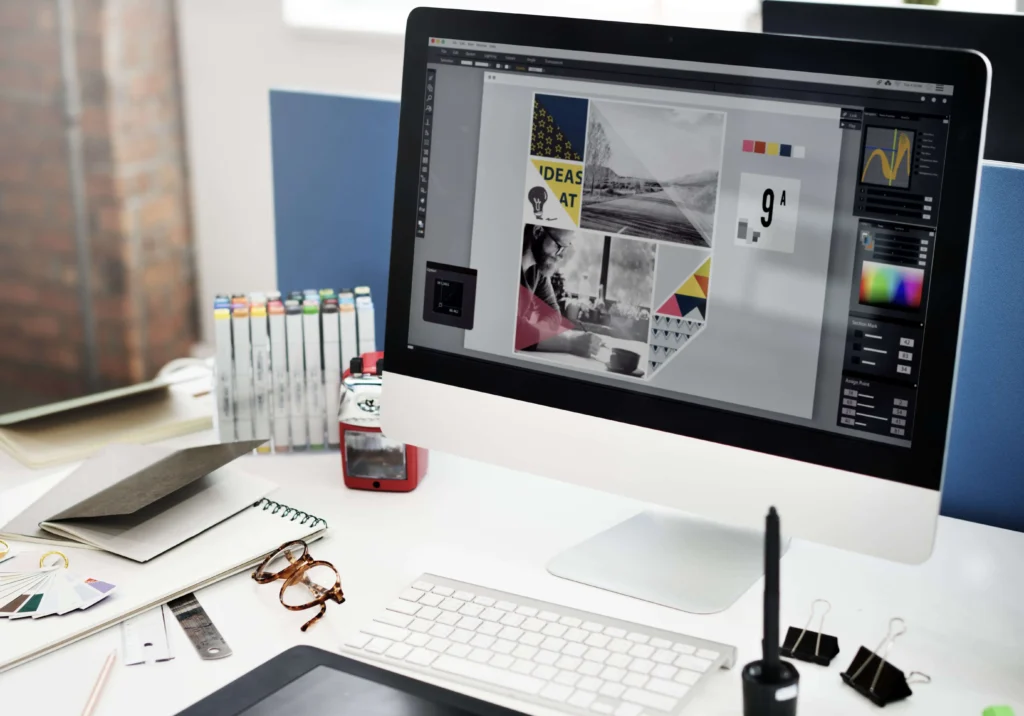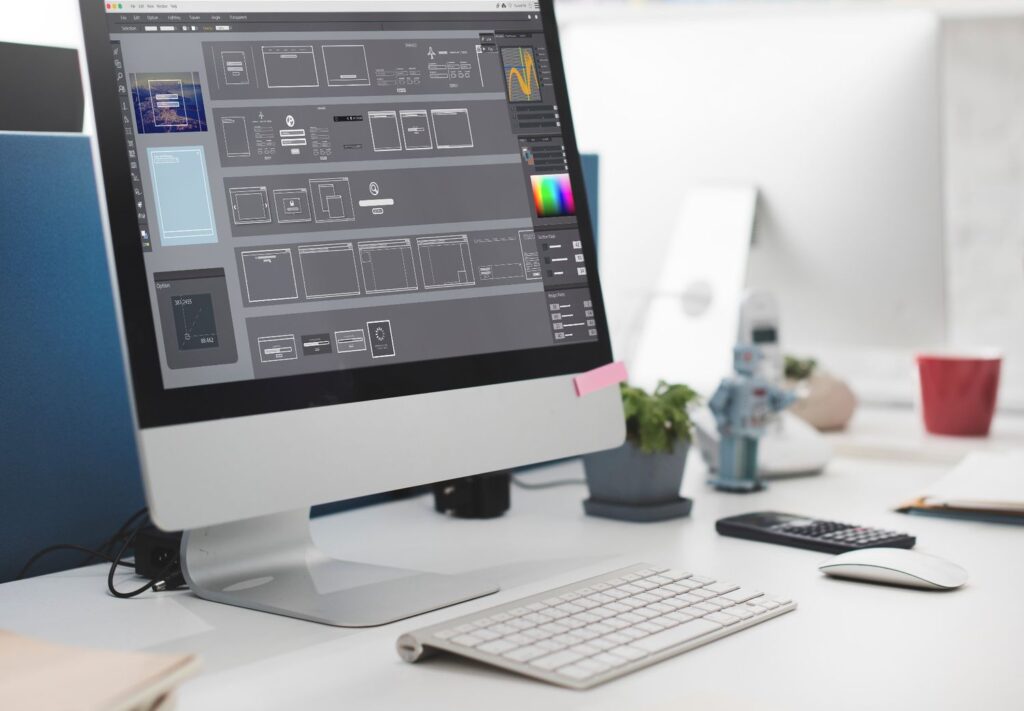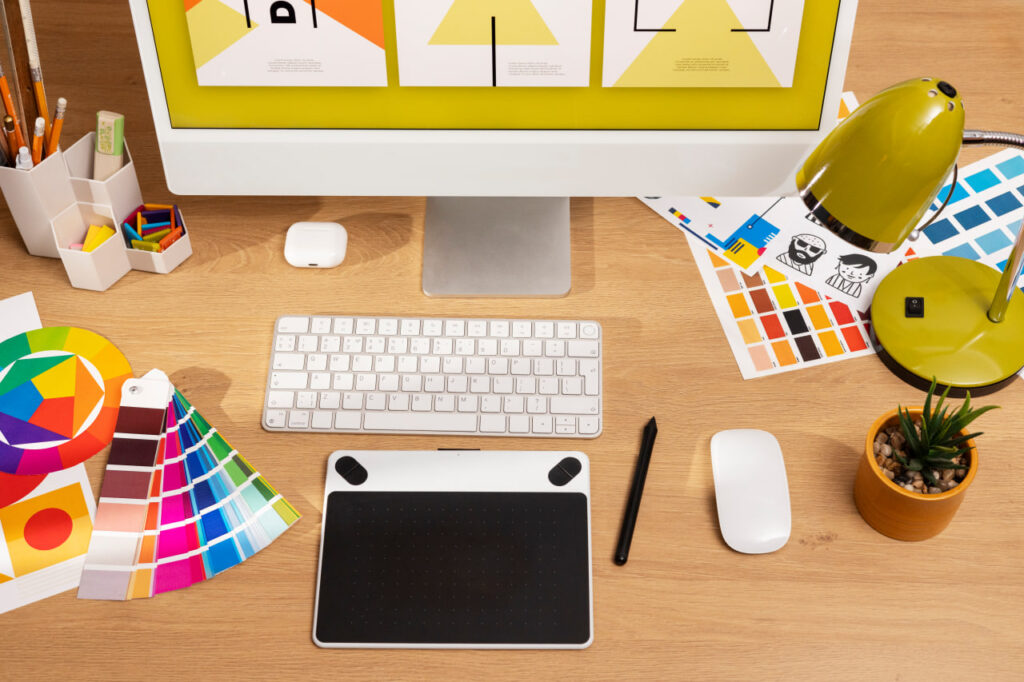Design today goes beyond visuals. That’s why choosing the best tools for graphic design is key to producing high-quality work efficiently. The right tools can streamline your process and amplify your creativity. Moreover, the revenue of graphic design services in the U.S. is set to reach $11.3 billion by 2025, reflecting its growing demand.
As a result, designers now have access to more powerful and flexible tools than ever before. With so many options available, we’ll break down the top tools and highlight what makes each one worth using. So, make sure to read until the end!
Key Takeaways
- Graphic design tools improve design speed, flexibility, and creative control.
- Free and premium options suit every designer’s project needs.
- Combining tools and typography enhances visual impact effortlessly.
7 Best Graphic Design Tools to Boost Creativity and Productivity
Having the right mix of free and paid tool options can streamline your workflow. Below are the best tools for graphic designers to create any projects.
1. Adobe Photoshop
Adobe Photoshop Logo | Image Source: logos-world.net
Perfect for pixel-level precision, this raster-based tool is built for creatives who dive deep into photo manipulation, compositing, and digital painting. Its layered approach and pixel editing make it the go-to standard for visual artists worldwide.
Features:
- Advanced retouching tools.
- AI-assisted features.
- Layered editing system.
Pros:
- Industry-standard software.
- Wide plugin support.
- Strong community backing.
Best for: professional designers, photographers, digital artists
Pricing: subscription-based from $22.99/month with Adobe Creative Cloud.
2. Adobe Illustrator
Adobe Illustrator | Image Source: logo.wine
When your design needs to scale without limits, a vector-based solution is essential. Illustrator excels at creating clean artwork using points, paths, and curves that never lose clarity. That makes Adobe Illustrator one of the best tools for graphic design for this particular need.
Features:
- Precise vector tools.
- Font customization.
- Artboard flexibility.
Pros:
- Seamless Adobe sync.
- Ideal for branding.
- High scalability.
Best for: illustrators, branding specialists, print designers.
Pricing: subscription-based from $22.99/month with Adobe Creative Cloud.
3. Canva
Canva Logo | Image Source: pcmag.com
Designed for simplicity and speed, this cloud-based platform brings drag-and-drop design to everyone without any experience required. Whether you’re creating an Instagram post or a pitch deck, Canva makes it easy to design from anywhere and is often listed among the best AI tools for graphic design.
Features:
- Pre-made templates.
- Online collaboration.
- Content planner.
Pros:
- Very beginner-friendly.
- Fast and intuitive.
- Accessible from anywhere.
Best for: content creators, small business owners, social media managers.
Pricing: free plan, Pro subscription available from $12.99/month.
4. Figma
Figma Logo | Image Source: 1000logos.net
Collaboration takes center stage in this browser-based vector tool, which reimagines UI/UX design for modern teams. Built for real-time feedback and seamless iteration, Figma makes design a shared space, not a solo process, earning its place among the best tools for graphic design.
Features:
- Live collaboration.
- Component reuse.
- Browser-based workflow.
Pros:
- Ideal for teams.
- No installs needed.
- Easy version control.
Best for: UI/UX designers, product teams, front-end developers.
Pricing: free for individuals, paid plans for teams start from $5/month.
5. Affinity Designer
Affinity Designer Logo | Image Source: creativeblog.com
Bridging the worlds of pixel and vector, this hybrid powerhouse offers a smooth switch between design modes as an ideal choice for those wondering which tool is best for graphic design. It’s perfect for creatives who need both precision and texture without the burden of a subscription.
Features:
- Vector-raster switch.
- Smooth performance.
- Grid/snapping tools.
Pros:
- One-time payment.
- Adobe alternative.
- Fast and responsive.
Best for: freelancers, illustrators, cost-conscious designers.
Pricing: one-time purchase, no subscription.
6. CorelDRAW
CorelDRAW Logo | Image Source: deviloarts.com
Long trusted in the print and layout world, this vector-based suite shines in projects that blend typography, illustration, and multi-page design. As one of the best tools for graphic design, it’s built for professionals who value control over every curve and font.
Features:
- Multi-page layout.
- Typography control.
- Bitmap tracing.
Pros:
- Versatile output options.
- Great for print.
- Longstanding software.
Best for: print designers, sign makers, branding professionals.
Pricing: subscription from $305/year or one-time license for $600.
7. Procreate
Procreate Logo | Image Source: logos-world.net
Built exclusively for iPad, this raster-based app transforms digital drawing into an intuitive, hands-on experience. Optimized for Apple Pencil, it feels more like sketching on paper than working on a screen.
Features:
- Custom brushes.
- Pencil sensitivity.
- Animation tools.
Pros:
- Fluid drawing feels.
- Great for sketching.
- Affordable pricing.
Best for: illustrators, concept artists, iPad users.
Pricing: one-time purchase at $12.99 on the App Store.
Create Your Masterpiece with the Best Tools for Graphic Design
Now your question of what the best tools for graphic design are has been revealed through the right choices. The other half lies in how you express your creative voice, especially through typography. With the right fonts, even the simplest design can feel intentional, balanced, and emotionally resonant.
To help you elevate your work, consider exploring a curated collection of stunning fonts for graphic design from Ghuroba Studio. Our professional license offers generous terms, including usage for logos, commercial projects, digital ads with 1,000,000 impressions, and even font embedding via @font-face for serious designers.
In short, when you combine powerful tools with high-quality font assets, your ideas can truly shine. So why wait? Take your design game to the next level and invest in tools and typefaces that support your vision from concept to final product.



